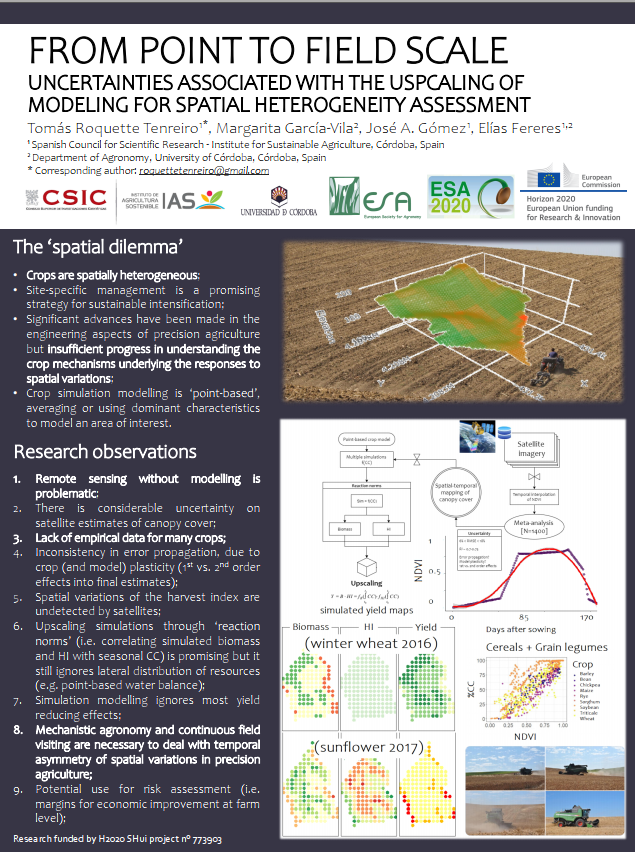SHui at ESA 2020
Instead of congregating in “the frying pan of Europe” (aka Sevilla, Spain), several SHui researchers virtually attended the European Society of Agronomy’s biennial meeting (1 to 4 September 2020 -https://esa-congress-sevilla2020.es/ ). Delivered via Zoom, with a total of 270 participants, the technology mostly held up and allowed interactions that otherwise would have been cancelled due to covid-19.
Prof Elias Ferreres (UCO, IAS-CSIC) gave the opening plenary address on Sustainable water resource management. He focused on the relationships between water use and food production and the sustainability of water-limited agriculture, including topics such as crop productivity as affected by water, water management at different scales, agriculture-environment interactions, soil and water conservation, irrigation water management, deficit irrigation strategies, and efficient use of limited water supplies in drought situations.
Although relatively few SHui partners are growing soybean, and it is unlikely to be exposed to cold temperatures in Mediterranean regions, European soybean production is constrained by cold temperatures as the crop is often planted into cold soils, particularly in northern latitudes. Professor Ian Dodd (ULANC) presented some preliminary findings demonstrating the importance of plant hydraulics in regulating leaf expansion (vital for canopy establishment) and plant hormones in regulating leaf gas exchange when this crop is grown at 14 degrees Celsius.
Tomas Roquette Tenreiro (IAS-CSIC) presented a poster on the field work undertaken at Cordoba over this season, entitled “From point to field scale – uncertainties associated with the upscaling of modelling for field heterogeneity assessment”. This work is part of working package 2.1 experimental tasks, in which the group of Córdoba has been assessing the spatial heterogeneity of some local commercial cereal fields by combining field observations with spatial data and simulation trials with AquaCrop. The preliminary results reveal promising potential for the upscaling of different yield components simulation, such as plant biomass and the harvest index, seen as a possible strategy for distributing yield gap analysis through space and time.


0 comments